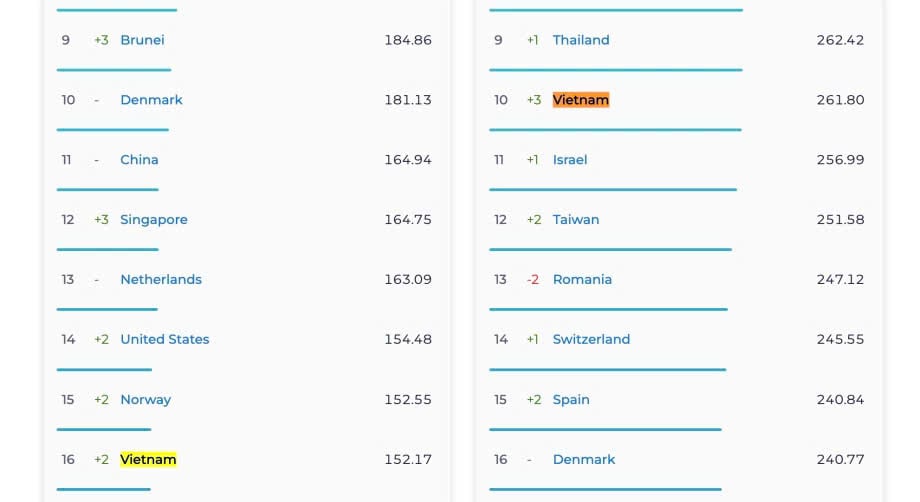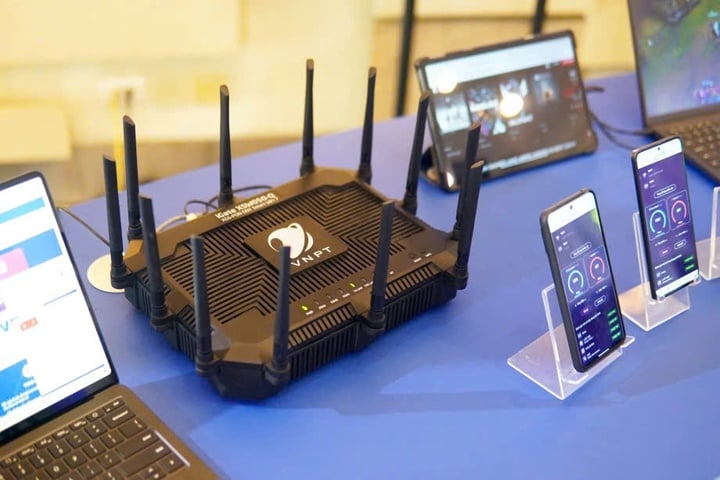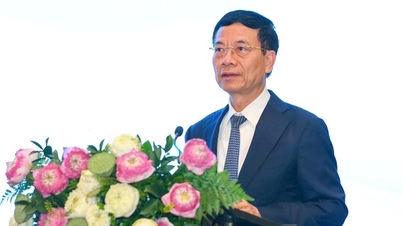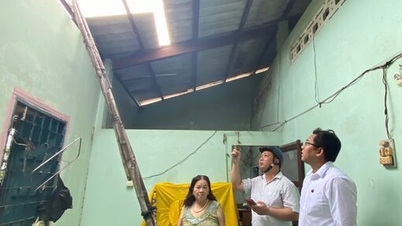Ten years ago, Akamai Technologies recorded an average Internet speed in Vietnam of 3.8 Mbps in the fourth quarter of 2015, ranking near the bottom of the list at 95th place out of more than 100 markets globally.
In mid-August, Ookla - the company behind the Speedtest speed measuring tool, announced the results of the Speedtest Awards for the best performing network operators in the first half of 2025. Vietnam made a strong impression with two network operators honored in the "fastest" group in the world .
Specifically, Viettel ranked third in the category of Fastest Mobile Network, combining results from 3G, 4G and 5G networks, ahead of Singapore's Singtel. Fastest 5G Mobile Network also recorded VinaPhone as second, just behind a UAE network.

Vietnam's ranking in Speedtest's August rankings for mobile (left) and fixed (right) internet speeds. Screenshot
Not only mobile networks, but also fixed Internet has increased strongly for many consecutive months, bringing Vietnam to 10th place in global speed - the highest ranking Vietnam has achieved since the Speedtest Global Index was launched in 2017. This is also the highest median speed since Vietnam joined the global Internet network in 1997.
With the above results, Vietnam is among the few markets in the world's top 20 for both mobile and fixed network speeds. In Ookla's latest rankings, besides Vietnam, only Singapore, UAE, US, South Korea, Denmark, Kuwait are in this group.
"After traveling to many places, I realized that using the Internet in Vietnam is great, cheap and available everywhere. Vietnam's technology infrastructure has changed significantly in recent times," reader Tran Khanh commented on VnExpress.
From latecomer to mastering technology
Over the past 80 years, post and telecommunications have always been considered one of the important fields. However, it was not until 1991 that Vietnam began to catch up with global telecommunications, when the first mobile network was deployed in 1993 by MobiFone . In 1997, the Internet officially opened after the efforts of the General Department of Posts at that time.
Over the past three decades, from a country lagging behind the world in terms of connectivity, Vietnam has gradually caught up in technology, mastering many core technology products and solutions for 5G systems and network equipment. New mechanisms and policies are constantly being improved to support development.

Minister of Science and Technology Nguyen Manh Hung at the booth displaying 5G equipment manufactured by Viettel at the Exhibition of 80 years of national achievements, August 2025. Photo: Luu Quy
In April 2024, Vietnam successfully auctioned its first 5G network frequency. Six months later, the first 5th generation mobile network was commercialized. The event not only marked a step forward in mobile technology, but also marked the official deployment of Vietnam's 5G equipment on the network.
"From being behind, approaching technology when 2G, 3G, 4G were popular 8-13 years before, this is the first time Vietnam can keep up with the world in applying the latest technology of the 4.0 revolution," Viettel Chairman Tao Duc Thang commented at the 5G network launch ceremony. This unit has mastered many important core network systems, bringing Vietnam into the group of the first 5 countries to produce 5G network equipment, after Sweden, Finland, China and South Korea.
At CES 2025 in Las Vegas (USA) in January, Viettel's 5G network equipment was also part of a testing agreement with the leading network operator in the Middle East, Emirates Integrated Telecommunications, affirming Vietnam's technological capabilities on the global telecommunications map.
With fixed networks, as demand for use increases, network operators are moving towards mastering the most advanced technologies. In October 2024, the first 'made in Vietnam' Wi-Fi 7 device with a speed of 10 Gbps, manufactured by VNPT Technology, was launched.
"This is the first wifi device in Asia-Pacific using XGSPON technology and we are also one of the first network operators to produce the device for the market," said a VNPT representative at the event witnessed by Qualcomm Technologies Vice President ST Liew.
In August, FPT also launched a package that allows users to use high-speed Internet with Wi-Fi 7 and XGS-PON technology, reaching speeds of 10 Gbps in both upload and download lines.

Wi-Fi 7 devices using XGSPON technology manufactured by VNPT, introduced in October 2024. Photo: Luu Quy
Popularize high-speed Internet
Resolution 57 of the Politburo sets the goal that by 2030, Vietnam will have an advanced, modern digital technology infrastructure with super-large capacity and super-wide bandwidth on par with advanced countries. To realize this, the Ministry of Science and Technology sets the goal that by 2030, Vietnam will have 15 international submarine fiber optic cable lines with a design capacity of 350 Tbps, of which two lines are owned by Vietnam, along with two international terrestrial fiber optic cable lines; 100% of users will be able to access at a speed of 1 Gbps.
Minister Nguyen Manh Hung has repeatedly emphasized that telecommunications infrastructure is a "national strategic infrastructure" and is of equal importance to transportation and electricity, and asked units to set a target of being in the "top 5, top 10" in the world. According to the report of the Telecommunications Department in the first half of 2025, the fixed broadband subscription rate in Vietnam reached 24.4/100 people, an increase of 3.9% over the same period. The rate of households using fiber optic cable reached 85.3%, an increase of 3.4% and higher than the world average (60%).
According to FPT network representative, users' demand for more and more applications requiring high bandwidth such as livestream, online learning, online meetings, games, IoT, creating motivation for domestic network operators to continuously upgrade services. In addition to increasing the minimum speed of subscription packages to 300 Mbps, network operators are currently increasing investment in infrastructure, fiber optic networks and service quality, while many new technologies are deployed such as GPON, XGS-PON, Wi-Fi 6, Wi-Fi 7, allowing download and upload bandwidth to be increased many times compared to before.
At the same time, the network operator also continuously expands international connection capacity and upgrades the domestic core network, aiming to ensure stability and high speed when traffic grows rapidly.

Engineers are testing a 5G base station developed in Vietnam. Photo: Trong Dat
According to statistics from the Telecommunications Department in June, Vietnam currently has six submarine optical cable lines including AAG, IA, AAE-1, APG, ADC, SJC2, with a total designed capacity of 80 Tbps, of which two lines ADC and SJC2 have just been put into operation. This year also marks the first time Vietnam has mastered the VSTN land optical cable line with a total designed capacity of 4 Tbps, expandable to 12 Tbps. This is the foundation for high-speed connection, 5G network can be deployed widely.
A representative of Viettel Telecom said the network aims to cover 91% of the population with 5G, expecting to attract 12 million subscribers this year. To do that, they plan to deploy 22,000 more 5G stations, bringing the total number of stations to 29,000. If successful, this number will be more than four times the number of stations Viettel deployed on the day the service launched last October, and more than twice the total number of 5G stations of all network operators currently serving in Vietnam (about 11,000).
Source: https://mst.gov.vn/dot-pha-thu-hang-internet-viet-nam-sau-gan-30-nam-hoa-mang-toan-cau-197250917202549328.htm


![[Photo] Hanoi morning of October 1: Prolonged flooding, people wade to work](https://vphoto.vietnam.vn/thumb/1200x675/vietnam/resource/IMAGE/2025/10/1/189be28938e3493fa26b2938efa2059e)



![[Photo] President of the Cuban National Assembly visits President Ho Chi Minh's Mausoleum](https://vphoto.vietnam.vn/thumb/1200x675/vietnam/resource/IMAGE/2025/10/1/39f1142310fc4dae9e3de4fcc9ac2ed0)
![[Photo] Keep your warehouse safe in all situations](https://vphoto.vietnam.vn/thumb/1200x675/vietnam/resource/IMAGE/2025/10/1/3eb4eceafe68497989865e7faa4e4d0e)


















































































Comment (0)